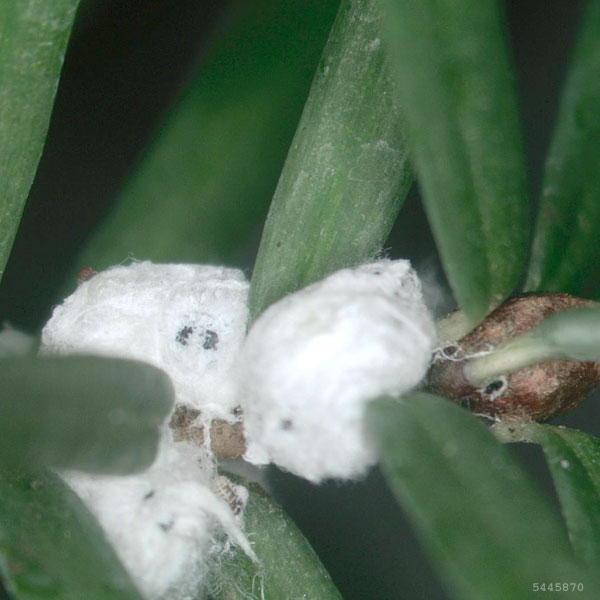Hemlock woolly what?

Have you seen what looks like cotton balls or clumps of snow at the base of hemlock tree needles? It could be egg sacs of hemlock woolly adelgid (HWA) (pronounced uh-del-jid). HWA is an insect that attacks and kills hemlock trees by feeding on nutrient and water storage cells at the base of needles. This insect is currently causing damage in areas of British Columbia, Ontario and Nova Scotia.
HWA can be spread by wind and animals, and by people moving nursery stock, logs, and other wood products. Early detection of HWA is critical to protecting Canada's forests and environment. In Canada, hemlock trees grow naturally in British Columbia and eastern Canada. In many of these forests, birds and other wildlife species rely on hemlock trees to provide nutrients, soil stability and a unique habitat.
Are you allowed to move that
The Canadian Food Inspection Agency (CFIA) works closely with federal, provincial and industry partners to manage this pest. In order to slow the spread of HWA and protect non-infested areas, the CFIA has issued several Hemlock Woolly Adelgid Infested Place Orders, most recently in June 2022.
HWA has been detected in British Columbia, in seven southwestern counties of Nova Scotia (Lunenburg, Digby, Kings, Queens, Shelburne, Yarmouth and Annapolis) and, in Ontario, Niagara Falls, Fort Erie and the Township of Wainfleet. Anyone who wants to move the following items out of those areas requires a movement certificate from the CFIA:
- hemlock (Tsuga spp.), yeddo spruce (Picea jezoensis) and tiger-tail spruce (Picea polita):
- plants for planting (for example, nursery stock, tree seedlings)
- forest products with bark attached (for example, logs, lumber, bark chips, wood mulch)
- dried branches
- hemlock, yeddo spruce and tiger-tail spruce Christmas trees
- fresh decorative wreaths, foliage and branches
- any kind of firewood (all tree species)
How you can help
Everyone plays a part in helping to protect our forests and nature.
What industry can do
- Know and respect the regulated areas for HWA.
- Do not move regulated items outside of the regulated areas without a movement certificate authorized by the CFIA. Contact your local CFIA office for more information.
- Implement a CFIA-approved quality management system for regulated wood products sourced from HWA regulated areas.
What the public can do
- Get informed, read the factsheet and watch for signs of HWA.
- Report suspect HWA or HWA damage to the CFIA. If you notice signs of HWA, contact your local CFIA office.
- Whether you're having a campfire or heating your house or cottage, always use firewood that is local or kiln dried (certified pest free) to prevent the spread of pests. Find out more at inspection.gc.ca/firewood.
Learn more about rules for moving firewood and how you can prevent the spread of invasive species.
Get more Inspect and Protect
- Want to learn more about what we do? Explore articles, videos and podcasts.
- Interested in reporting on a story? Contact CFIA Media Relations to arrange an interview with one of our experts.
- Have an idea or feedback to share? Get in touch!
- Date modified: